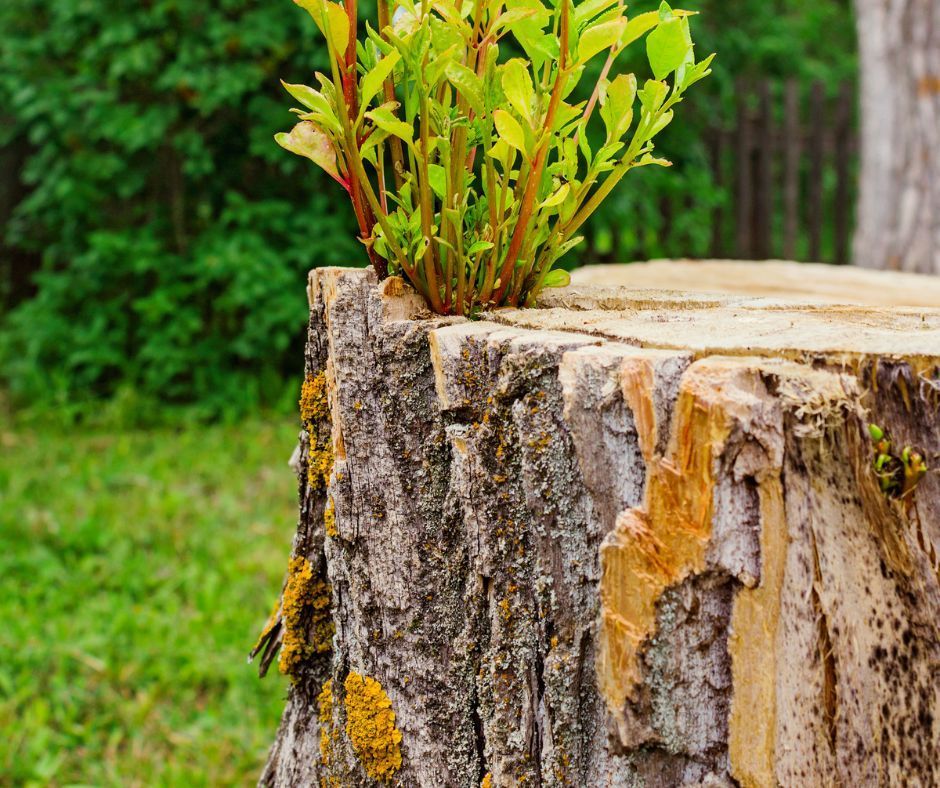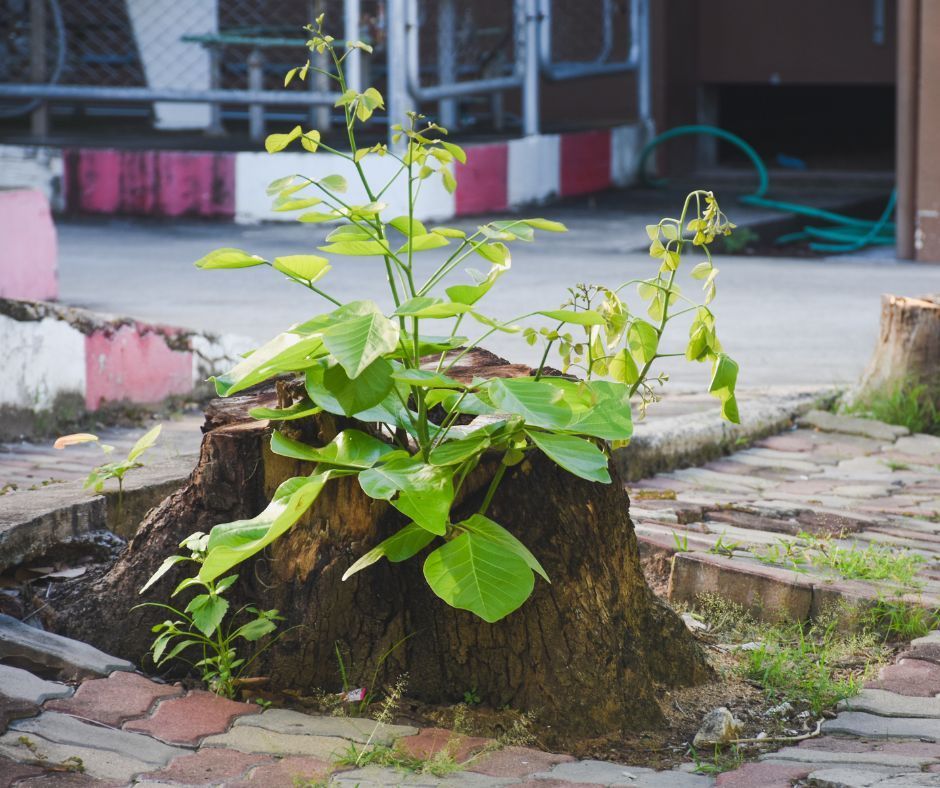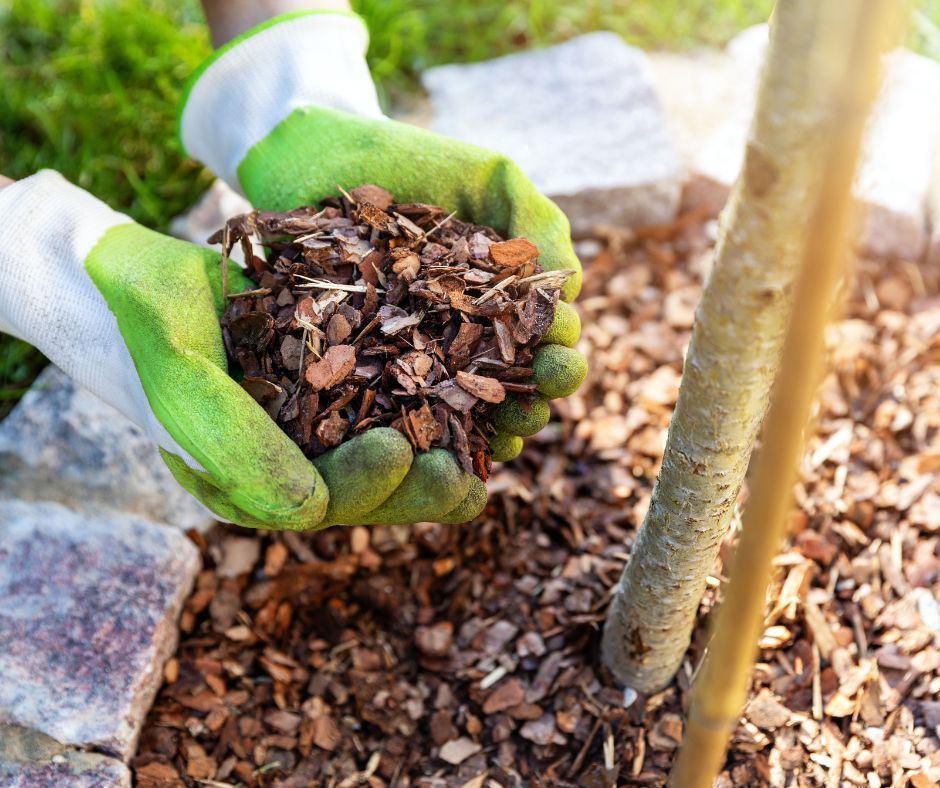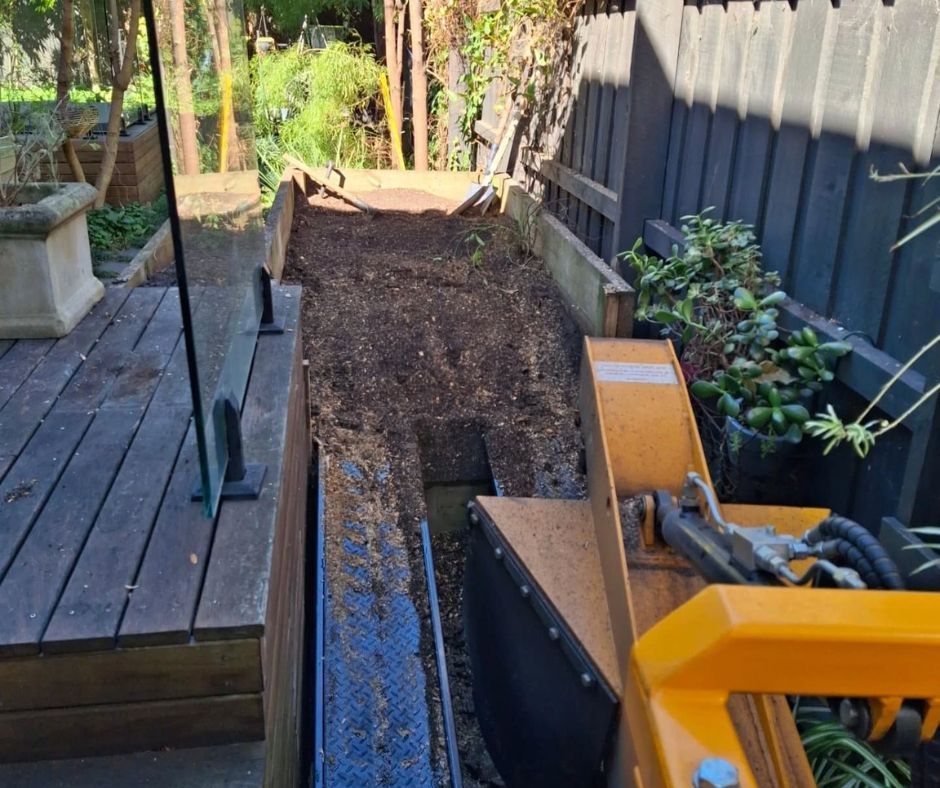Do Tree Stumps Regrow? Here's What You Should Know!
You’ve cut down the tree, cleared the branches, raked up the mess... job done, right? Not quite. A few months later, you might spot fresh little shoots pushing out of the stump like it’s planning a comeback.
Plenty of Aussie homeowners get caught out when stumps that look dead start sprouting again. If you’ve seen this happen, you’re not alone. There’s a reason for it.
Let’s look at why tree stump regrowth occurs, what makes some worse than others and how to stop them before they turn into a bigger and costlier problem.
Do Tree Stumps Grow Back?
Do tree stumps regrow after cutting? In many cases, yes. Unless the stump has been properly removed or treated, it’s often still alive and ready to sprout again.
Here’s why. When a tree is cut down, the roots and stump retain stored energy. That energy fuels new shoots as the tree tries to regrow. For many species, this is a built-in survival response. Chop it down and it simply gives it another shot.
Factors Influencing Tree Stump Regrowth
Some stumps bounce back faster and stronger than others. These are the usual suspects:
Tree Species
There are some specific types of trees that are known for relentless regrowth. These trees don’t give up easily and often sprout new shoots even after a thorough cut.
Tree Age and Size
Younger and healthier trees bounce back more readily than older or weakened ones. Their roots are still alive and full of stored nutrients, which helps fuel new growth.
Season of Cutting
Trees cut in spring or early summer are often still in growth mode. That gives them the momentum to send up new shoots quickly.
Stump Height
The taller the stump, the more living tissue is left to fuel new growth.
Environmental Conditions
Stumps in damp, fertile soil have everything they need to regrow. Good conditions make it much easier for new shoots to take off.

Timeline of Regrowth
Tree stump regrowth is slow at first, but often goes unnoticed. Here’s how it typically progresses over time.
0–6 Months
Nothing much. The stump looks quiet, but isn’t necessarily dead.
6–12 Months
Early sprouts can appear. These are usually small regrowths.
1–3 Years
Shoots become stronger, especially in species that are known for coming back. They start to compete with nearby plants.
3–10 Years
The stump can produce full-blown saplings if left untouched. By this stage, it's well on its way to becoming a new tree.
10–20 Years
Given the right conditions, a whole new tree can grow where the old one stood. The root system may also be larger than before.
Do Tree Stumps Regrow? Not Anymore!
If you want to stop a tree from growing back after cutting it, acting early is important. These methods are the most reliable ways to prevent tree stump regrowth and shut down sprouting for good.
Stump Grinding
Stump grinding uses a machine to grind the stump below ground level. It removes the main body and prevents shoots from growing.
Stump Removal
The entire stump and part of the root system are ground down. This method leaves nothing behind to regenerate.
Chemical Treatment
Special chemicals are applied to fresh cuts on the stump. These stop new cells from forming and block any chance of regrowth.

Issues Brought by Tree Stump Regrowth
Stump regrowth might seem minor, but it often leads to costly problems. Here are eight common problems it can cause around your home or garden.
Damage to Underground Utilities
Regrowing roots can interfere with pipes, cables or drainage systems. Over time, they may cause blockages or cracks underground.
Trip Hazards
New shoots and uneven surfaces create safety risks. This is especially dangerous for kids, pets or visitors.
Unwanted Tree Growth
That small shoot can grow into another full-sized tree. You’ll be back where you started, only with more work to do.
Root Spread into Garden Beds
Sprouting roots can invade garden beds and compete with your plants. This often leads to poor soil and stunted growth in nearby flowers or veggies.
Attraction of Pests and Termites
Rotting stumps are ideal hiding spots for termites, ants and other pests. These can spread to your home if left unchecked.
Spoils Landscaping Aesthetics
A sprouting stump looks messy and unfinished. It can ruin the look of a neat garden or lawn.
Blocks Future Construction or Landscaping Plans
Planning a deck, driveway or shed? A live stump can delay or complicate those projects.
Encourages Fungal Growth and Rot
Damp stumps create the perfect conditions for fungi to grow. This rot can spread to other plants and even nearby structures.
Frequently Asked Questions About Tree Stump Sprouting
How long does it take for a tree stump to sprout?
In most cases, sprouts can begin to appear within 6 to 12 months after cutting. This depends on the tree species and soil conditions.
Will grinding a stump stop it from growing back?
Yes, stump grinding and removal effectively prevents new growth. It’s one of the most effective ways to stop tree stump regrowth.
Can tree roots grow after stump removal?
If the roots are left behind, some may continue to grow for a short time. However, without the stump, they eventually run out of energy and nutrients.
Get Stumped Knows How to Handle Tree Stump Regrowth
Still wondering, do tree stumps grow back? If the answer feels all too familiar every time you see new shoots, it’s time to act. It’s a common issue in Melbourne, and Get Stumped has the right equipment and experience to remove it the right way.
We’re fast, experienced and work with both residential and commercial properties across Melbourne and nearby suburbs. Whether it’s one or multiple stumps, we’ll get the job done without fuss.
Give us a call today and let us handle the hard work for you.
Reach out today for a free, no-obligation quote!




